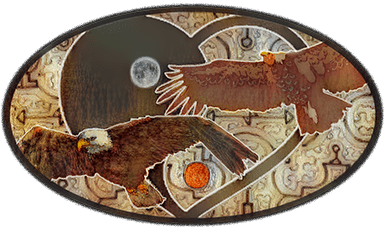The Art of Surrender: Lessons from ‘Letting Go’

| Once there lived a village of creatures along the bottom of a great crystal river. The current of the river swept silently over them all — young and old, rich and poor, good and evil — the current going its own way, knowing only its own crystal self. Each creature in its own manner clung tightly to the twigs and rocks of the river bottom, for clinging was their way of life, and resisting the current was what each had learned from birth. But one creature said at last, “I am tired of clinging. Though I cannot see it with my eyes, I trust that the current knows where it is going. I shall let go, and let it take me where it will. Clinging, I shall die of boredom.” The other creatures laughed and said, “Fool! Let go, and that current you worship will throw you tumbled and smashed against the rocks, and you will die quicker than boredom!” But the one heeded them not, and taking a breath did let go, and at once was tumbled and smashed by the current across the rocks. Yet in time, as the creature refused to cling again, the current lifted him free from the bottom, and he was bruised and hurt no more. And the creatures downstream, to whom he was a stranger, cried, “See a miracle! A creature like ourselves, yet he flies! See the messiah, come to save us all!” And the one carried in the current said, “I am no more messiah than you. The river delights to lift us free, if only we dare let go. Our true work is this voyage, this adventure.” But they cried the more, “Savior!” all the while clinging to the rocks, and when they looked again he was gone, and they were left alone making legends of a savior. —from Illusions by Richard Bach |
In “Letting Go,” from Richard Bach’s “Illusions,” we find a profound illustration of life, spirituality, and the journey towards self-realization. This simple but profound narrative can serve as a compass for personal transformation, a guide to integrating spirituality into our daily lives, and a reminder of the need for surrender, trust, and courage in our spiritual journey.
The primary metaphor of the story, the river’s current, represents the flow of life or divine will, the universal truth we are all part of. We are the creatures clinging onto the bottom of this river, resisting the current, afraid of where it might take us. This clinging symbolizes our attachment to the material world, our fears, our preconceived notions, and the false security of familiarity.
Incorporating this into our daily spiritual practice requires understanding and accepting that life is a flow, an eternal journey of change and evolution. Much like in meditation, where we learn to observe our thoughts without judgment or resistance, we should learn to flow with life, observing its events, joys, and challenges as transient experiences. Instead of resisting change or trying to control every aspect of our lives, we can choose to trust in the current, to trust in life’s inherent wisdom.
The creature that dares to let go and trust the river’s current embodies the principle of surrender. Spiritually, this refers to surrendering our ego, our illusions of control, to the greater universal wisdom. It speaks of having faith in a divine plan or the inherent benevolence of the universe. Incorporating this idea into our spiritual practice involves cultivating a sense of trust and surrender. It can mean offering our actions, our concerns, our very life to the divine or the universal flow, and trusting that we will be led to our highest good.
In our daily lives, this can translate to being open to new experiences, letting go of our rigid expectations, and developing resilience. When faced with difficulties or uncertainty, instead of desperately clinging to our comfort zones, we can choose to trust the process and remain open to the lessons and growth it may bring.
Lastly, the story addresses the common pitfall of projecting our spiritual potential onto others. Upon witnessing the liberated creature, his observers immediately label him a ‘savior,’ reflecting their inclination to externalize their spiritual aspirations. This reflects a widespread tendency to idolize those who have achieved what we perceive as unattainable, turning them into ‘messiahs’ or ‘gurus.’ Yet, in doing so, we relinquish our power and fail to recognize our inherent capability to achieve the same liberation. As the creature points out, he is ‘no more messiah than you.’ This serves as a potent reminder that the transformative journey of letting go, of spiritual liberation, is not exclusive to a select few. It is a journey accessible to all, if only we dare to take it. Our spiritual journey is, therefore, a personal voyage, an audacious adventure of self-discovery and self-realization. It urges us to look within, to find our own salvation, instead of seeking it externally.
“Letting Go” is a reminder of the spirituality that lies in trusting the flow of life, daring to let go, and embarking on the adventurous journey within. Incorporating these principles into our spiritual practice and daily life can open doors to a deeper understanding of our existence and foster a sense of peace, resilience, and liberation.




Beautiful
Jay this is amazing. Thank you for sharing this. I am going to use this in my work with people.
Let Go Let God!! This is what I whisper every time I am feeling anxious or stressed. Thank you James for sharing that!
This really resonated with me and triggered looking at times I have been in the different perspectives outlined. Looks like I’ve got another book to add to my reading list…
Love this 🙏